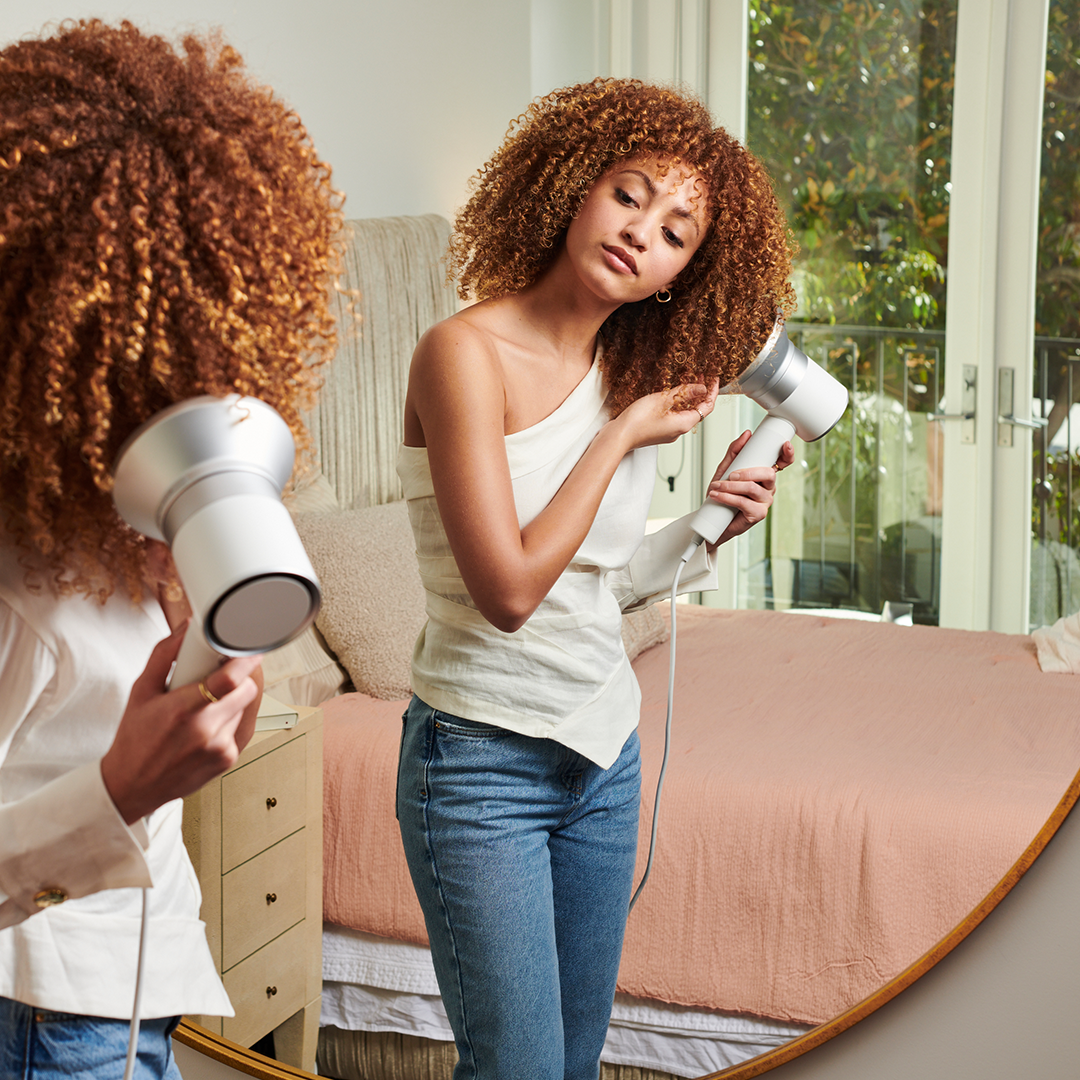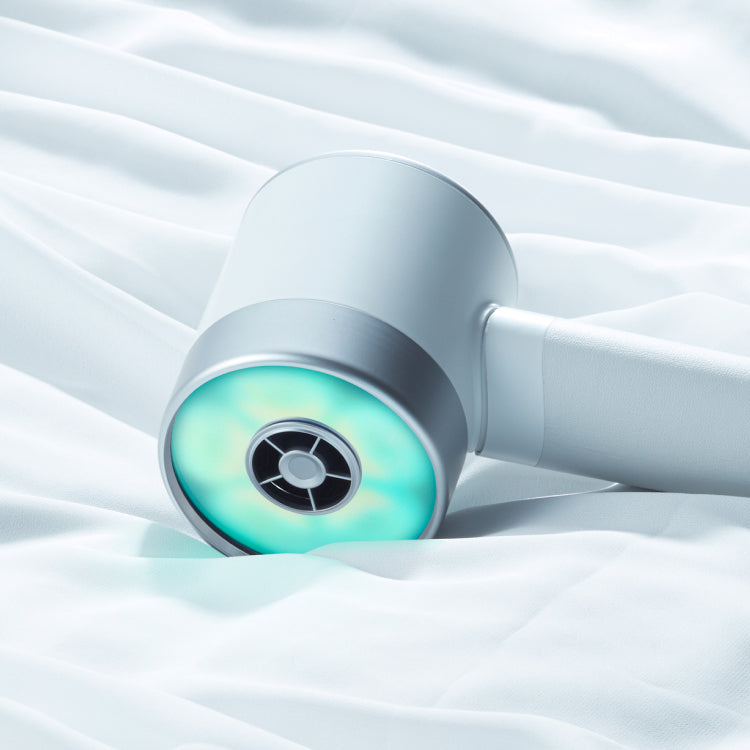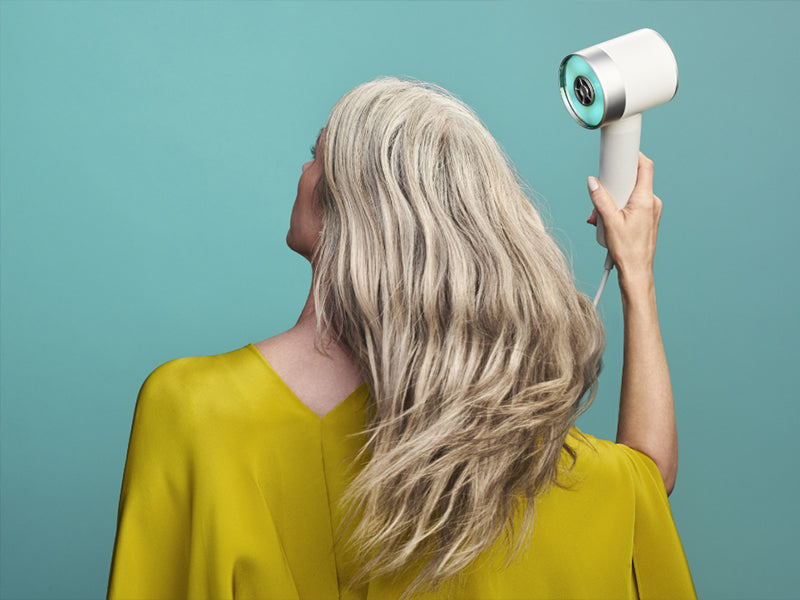Introduction
Heat damage is as old as the invention of hot hair tools. We subject the hair to intense heat for the purpose of drying your hair or styling it.
The working principles of the hairdryer have not changed in over 100 years. The team at Zuvi took notice and was set on a mission to change this. We’ve spent thousands of hours in the Zuvi Hair Lab experimenting, testing—and retesting!—to determine how the Zuvi Halo can help deliver healthier hair. Because we know that healthy hair equals beautiful hair.
In this article, we'll get some expert advice and understand as well how Zuvi Halo can help.

Understanding Heat Damage
First of all, what is heat damage and what are its signs?
Heat damage is caused to the hair by the use of hot hair tools, such as curling irons, flat iron, hot rollers, and of course, traditional hair dryers. Some of those tools can reach temperatures as high as 450F!
When exposed to these elevated temperatures, the keratin proteins present in your hair undergo changes. This could lead to the gradual deterioration of keratin proteins, which constitute approximately 85% of our hair. As a result, your hair may become progressively dry and fragile.

The 6 Signs of Heat Damage
- Dullness: Picture your hair's cuticles as its guardians of shine. But when these cuticles get hurt, the shine is lost. No matter how much you wash, your hair just won't shine like it used to.
- Dry Hair: Damaged hair turns into a moisture magnet – and not in a good way. It can't hold onto that much-needed hydration, which can lead to split ends.
- Breakage: Imagine your hair as a stretchy rubber band – that's its natural flexibility. But when heat enters the scene, it's like that rubber band loses its bounce. And if you throw split ends into the mix, well, you've got a recipe for hair that likes to break off and result in flyaways.
- Texture Changes: Heat damage can turn that silky hair rough. If your hair starts feeling less smooth and more textured, it's a sign that heat might be taking a toll.
- Tangled Hair: Picture your hair's cuticles as puzzle pieces. Normally, they fit together snugly. But when they're damaged, it's like those pieces go rogue, sticking out, creating tangles.
- Trouble Coloring: Heat-damaged hair becomes a bit of a sponge, soaking up more dye than intended. This can lead to surprise darkening, but also quickly fading, as your hair releases the color pigments faster.
Expert Strategies to Prevent and Heal Heat-Damaged Hair

Heat damage is a problem that most of us face, but one that’s easy to treat with the right products and know-how. For some expert tips, we turned to London-based hairstylist Dhiran Mistry (who counts makeup artist Katie Jane Hughes as a client) for his solutions for preventing heat damage and healing damaged hair.
Use High-Quality Hair Products
First and foremost, it’s essential to use quality hair products that are designed for your hair type. This means looking for shampoos, conditioners, and masks free of harsh chemicals. Avoid sulfates and SLS if you can. It’s also important to make sure you’re not overwashing your hair, as this can strip away natural oils and leave your hair dry and brittle. Instead, try to wash your hair no more than two or three times per week.
The Power of Heat Protectants
Heat protectants also play an important role in preventing heat damage, especially when styling your hair using flat irons and curling irons. They act as a shield for your hair against the damaging effects of high heat. These products are specifically formulated to create a protective barrier on your hair strands, serving as a buffer between the intense heat and the delicate fibers of hair.
“You also want to put something in your hair to protect it before using hot tools,” says Mistry “Serums and oils are best. I like Shu Uemera’s Absolute Nourishing Oil and Bumble & Bumble’s Invisible Oil.
Extra-Care During Styling & Hair Drying
It goes without saying that investing in hair tools that are actively seeking to avoid heat damage is a must.
When it comes to styling, opt for a tool with adjustable heat settings and try to use the lowest setting possible- prevention is key. This can help mitigate the effects of heat damage on hair. “My top tip, is don’t use a dryer, straightener, or curling iron for too long!,” suggests Mistry. “If you’re trying to create a look—like a curl—and it’s not happening, don’t go over it and over it. Just move on to let it cool and come back later.”
With Zuvi Halo's advanced technology, you can safely and quickly dry your hair using the CARE mode, which is engineered for hair health and completely autonomous. Among other factors, it takes into account time spent drying, room temperature and more to find a drying mode that is appropriate for you. If your hair is particularly fragile or sensitive, you can switch to SOFT mode, which is even gentler on the hair and scalp.
Tips for Over-Processed and Colored Hair
Steering clear of or minimizing heat damage becomes crucial for individuals who have undergone chemical treatments like perms or procedures like Brazilian blowouts, as well as those who have colored or bleached their hair. This is particularly significant when considering the hair's recovery process post-treatment.
For overprocessed or heavily colored hair, Mistry recommends treating it with Olaplex, K18, or an-house salon treatment like David Mallet’s Tokyo treatment.
Conclusion
In this article, we've covered the fundamentals of heat damage, shared its telltale signs, and unveiled effective prevention strategies. Our conversation with a hairstylist enriched provided insider tips and recommendations, exploring hair products ready to combat heat damage. Remember, the key lies in prevention, and tools like the Zuvi Halo, designed to prevent heat damage, play a key role in maintaining hair health.




Commenta
Nota che i commenti devono essere approvati prima di essere pubblicati.
Questo sito è protetto da hCaptcha e applica le Norme sulla privacy e i Termini di servizio di hCaptcha.